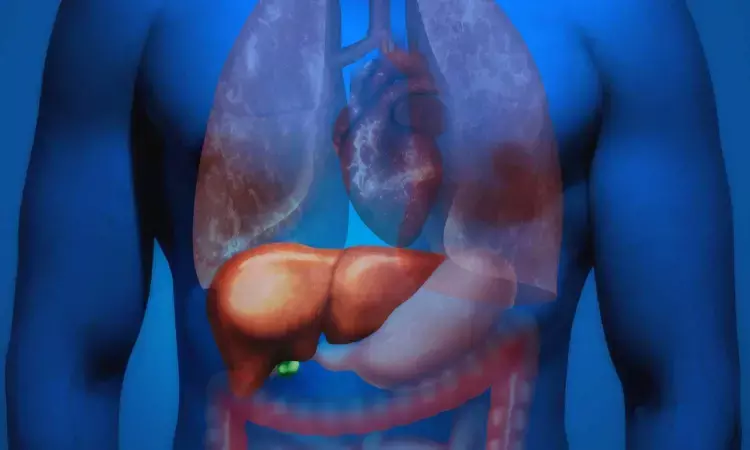- Home
- Medical news & Guidelines
- Anesthesiology
- Cardiology and CTVS
- Critical Care
- Dentistry
- Dermatology
- Diabetes and Endocrinology
- ENT
- Gastroenterology
- Medicine
- Nephrology
- Neurology
- Obstretics-Gynaecology
- Oncology
- Ophthalmology
- Orthopaedics
- Pediatrics-Neonatology
- Psychiatry
- Pulmonology
- Radiology
- Surgery
- Urology
- Laboratory Medicine
- Diet
- Nursing
- Paramedical
- Physiotherapy
- Health news
- Fact Check
- Bone Health Fact Check
- Brain Health Fact Check
- Cancer Related Fact Check
- Child Care Fact Check
- Dental and oral health fact check
- Diabetes and metabolic health fact check
- Diet and Nutrition Fact Check
- Eye and ENT Care Fact Check
- Fitness fact check
- Gut health fact check
- Heart health fact check
- Kidney health fact check
- Medical education fact check
- Men's health fact check
- Respiratory fact check
- Skin and hair care fact check
- Vaccine and Immunization fact check
- Women's health fact check
- AYUSH
- State News
- Andaman and Nicobar Islands
- Andhra Pradesh
- Arunachal Pradesh
- Assam
- Bihar
- Chandigarh
- Chattisgarh
- Dadra and Nagar Haveli
- Daman and Diu
- Delhi
- Goa
- Gujarat
- Haryana
- Himachal Pradesh
- Jammu & Kashmir
- Jharkhand
- Karnataka
- Kerala
- Ladakh
- Lakshadweep
- Madhya Pradesh
- Maharashtra
- Manipur
- Meghalaya
- Mizoram
- Nagaland
- Odisha
- Puducherry
- Punjab
- Rajasthan
- Sikkim
- Tamil Nadu
- Telangana
- Tripura
- Uttar Pradesh
- Uttrakhand
- West Bengal
- Medical Education
- Industry
Fatty Liver Linked to Survival in E. Coli Infection

Scientists at UC San Francisco (UCSF) have developed a new way of looking at sex-biased diseases that is rooted in evolutionary biology.
They theorize that males and females took opposing paths in a tradeoff between immunity and metabolism that occurs in the liver. This helped males fight bacterial infections from wounds received in dominance fights, while helping females store subcutaneous fat to survive when food is scarce.
Working in mice, the scientists delineate the activity of a signaling pathway that regulates lipids, storing fat in the liver in males and releasing it into the bloodstream in females. This pathway also responds to growth hormone.
This phenomenon may have shaped male biology in ways that hold risks in today's high calorie environment. The findings have particular relevance for fatty liver, which affects a quarter of the U.S. population. It is seen predominantly in men until women reach menopause.
"Scientists have only recently started to understand there are these profound differences between males and females," said Holly Ingraham, PhD, Herzstein Professor of Molecular Physiology at UCSF and co-senior author of the study, which appears Oct. 21, 2022, in Science. "Understanding these differences is going to be the key to unlocking therapeutics for sex-biased diseases. Fatty liver is one example."
The experiments found that male mice were three times more likely than females to survive infection with the bacteria E. coli. The females developed hyperlipidemia, a condition that is also seen in humans with severe sepsis. Lowering their lipid levels helped them to survive.
The investigators then examined how males and females respond to the contemporary environmental challenge of overeating by feeding the mice high-fat chow. Males developed fatty liver and glucose intolerance, which can lead to Type 2 diabetes, but females did not. This was true even when males and females gained a similar amount of weight.
Searching the literature for something that could explain this, the team identified a transcription factor called BCL6, which prevents the breakdown of fat in the liver and is much more present in male mice.
Deleting the gene for this protein eliminated liver fat in the males, and along with it their ability to survive the infection.
"The host defense programs in the liver are the predisposing factors that drive fatty liver in males," said Joni Nikkanen, PhD, a postdoctoral fellow in the Department of Cellular Molecular Pharmacology, who began the work with co-senior author Ajay Chawla, PhD, formerly of UCSF and now at Merck Research Labs.
"We have an evolutionary perspective on why such programs have developed-because they protect males against bacterial infections," he said. "But in another context, these same programs are not good for you anymore, and you will develop more severe fatty liver."
The team also examined how the presence of BCL6 affected gene expression in the liver. This process begins at puberty when males produce more testosterone, and their pituitary glands start to secrete growth hormone in sharp peaks and valleys.
These intermittent bursts, likely regulated by testosterone, are important. When researchers infused male mice continuously with growth hormone the way it is secreted in females, BCL6 disappeared from their livers, and they lost the ability to fight E. coli infection.
The results point to growth hormone as a potential therapy for adults with fatty liver disease, an idea that is currently being tested. Its effects are already well established in children whose pituitaries don't produce enough growth hormone. Male children especially tend to develop fatty liver, but it goes away when they are given growth hormone to treat their short stature.
The work also expands the scientific view of how the body fights infection to include organs like the liver.
Reference:
Joni Nikkanen, Yew Ann Leong, William C. Krause, Denis Dermadi, J. Alan Maschek, Tyler Van Ry, James E. Cox, Ethan J. Weiss, Omer Gokcumen SCIENCE 20 Oct 2022
DOI: 10.1126/science.abn9886
Dr Kamal Kant Kohli-MBBS, DTCD- a chest specialist with more than 30 years of practice and a flair for writing clinical articles, Dr Kamal Kant Kohli joined Medical Dialogues as a Chief Editor of Medical News. Besides writing articles, as an editor, he proofreads and verifies all the medical content published on Medical Dialogues including those coming from journals, studies,medical conferences,guidelines etc. Email: drkohli@medicaldialogues.in. Contact no. 011-43720751


